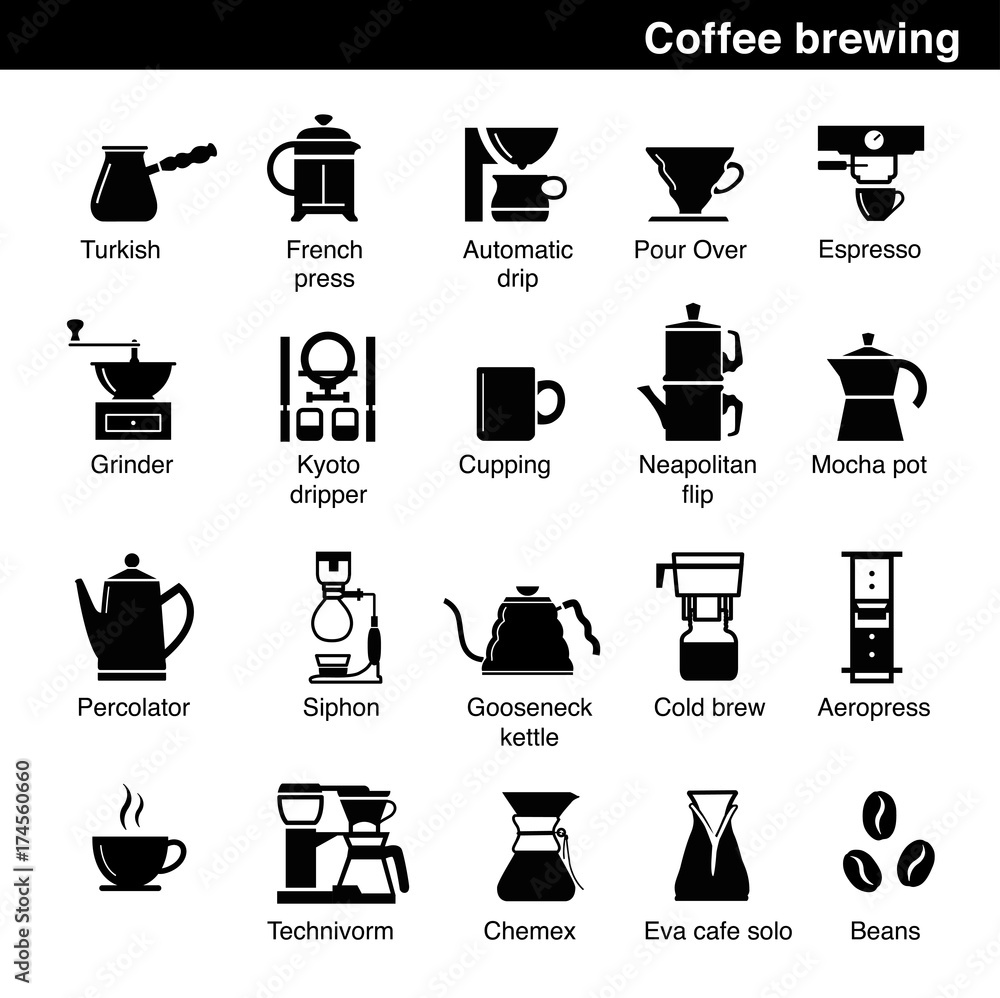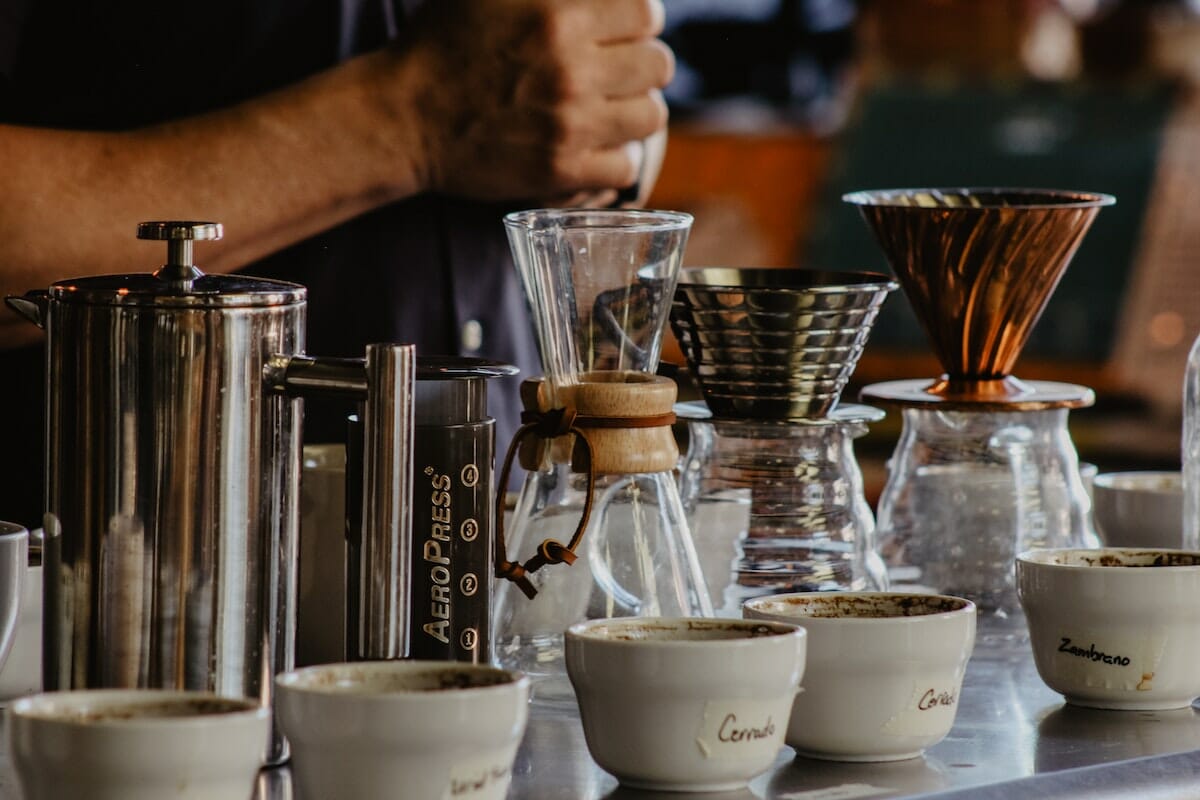Coffee Brewing Methods Debunked: From French Press to Cold Mixture
Coffee Brewing Methods Debunked: From French Press to Cold Mixture
Blog Article
The Science Behind Coffee Brewing: Just How Temperature Level and Time Affect Your Beverage
Recognizing the scientific research behind coffee brewing reveals that temperature level and time are not simple variables yet essential elements that dictate the beverage's flavor account and total high quality. The ideal brewing temperature level normally drops in between 195 ° F and 205 ° F, while the duration of extraction varies substantially across various methods. This interplay of aspects can cause a cup that is either unsatisfactory or fascinating. As we check out the subtleties of these components, the concern emerges: how can one efficiently balance temperature level and time to attain that best mixture?
The Chemistry of Coffee Extraction
The chemistry of coffee removal digs right into the detailed procedures that transform raw coffee beans right into the aromatic drink appreciated worldwide. This transformation largely includes the solubility of various substances existing in the beans, which are affected by aspects such as grind size, water quality, and the brewing approach used.
Throughout the brewing procedure, warm water acts as a solvent, removing soluble compounds, consisting of high levels of caffeine, acids, sugars, and lipids, from the coffee grounds. Each substance contributes to the flavor profile, aroma, and body of the last drink. Acids are responsible for tangy and brilliant notes, while oils add to an abundant mouthfeel.
The extraction process is not consistent; various substances liquify at different rates. The first stages of brewing extract acids and sugars, causing a pleasurable acidity, while extended extraction can lead to anger due to over-extraction of undesirable compounds. Recognizing these chemical interactions is important for optimizing brewing strategies, as the balance between extraction time and water temperature level can substantially affect the total top quality of the coffee. Eventually, mastering the chemistry of coffee removal is vital to achieving a delicious and well-rounded mug.
Suitable Brewing Temperatures
Locating the ideal developing temperature is important for opening the full possibility of coffee tastes and scents - coffee brewing methods. Research study suggests that the optimum range for brewing coffee exists in between 195 ° F to 205 ° F(90 ° C to 96 ° C) Within this variety, the removal procedure efficiently liquifies the preferable soluble compounds in coffee beans, bring about a well balanced and tasty cup
Developing at reduced temperature levels, such as below 195 ° F(90 ° C ), might lead to under-extraction, generating an acidic and weak mixture with soft flavors. Conversely, developing at temperature levels going beyond 205 ° F(96 ° C) can cause over-extraction, generating a harsh and bitter preference as a result of the extreme dissolution of undesirable substances, such as tannins.
Moreover, the ideal brewing temperature level can vary depending on the coffee bean kind and roast degree. Lighter roasts typically profit from somewhat greater temperatures to enhance their complicated taste profiles, while darker roasts may be better fit to lower temperatures to minimize bitterness.
Eventually, keeping accuracy in developing temperature levels is essential for attaining an unified equilibrium of flavors, ensuring that every cup of coffee supplies a rewarding sensory experience.
Effect of Brewing Time
Developing time plays a critical function in determining the flavor profile and general high quality of coffee. The removal procedure, which influences the preference, aroma, and body of the beverage, is largely depending on for how long the coffee grounds touch with water. Shorter developing times can cause under-extraction, causing a sour or weak flavor, as not nearly enough soluble compounds are liquified. Conversely, prolonged developing can result in over-extraction, where unfavorable additional resources compounds are launched, resulting in an astringent or bitter preference.
Ideal brewing time differs depending upon the approach made use of and the work dimension of the coffee. As an example, a French press commonly calls for about four minutes, while coffee extraction is generally finished within 25 to 30 seconds. It is vital to calibrate developing time in conjunction with other variables, such as water temperature and coffee-to-water ratio, to accomplish the wanted flavor profile.
Recognizing the effect of brewing time allows coffee fanatics to fine-tune their developing strategies, ultimately boosting the sensory experience of their mug (coffee brewing methods). With careful focus to this variable, one can unlock the full possibility of the coffee, exposing its one-of-a-kind attributes and subtleties
Brewing Approaches and Their Results

As an example, techniques like French press and chilly mixture enable a much longer steeping time, causing a fuller body and robust flavor as a result of enhanced removal of oils and soluble solids. On the other hand, coffee brewing makes use of high pressure and a much shorter removal time, More hints producing a focused shot that highlights extreme tastes and an abundant crema.
Pour-over methods, such as Chemex or V60, provide an even more controlled extraction procedure, permitting the brewer to control circulation price and water circulation, which can improve illumination and clarity. On the other hand, percolation techniques cycle water with the coffee premises multiple times, bring about a more powerful, frequently bitter taste.
Lastly, the use of paper filters versus steel filters can also affect the last taste; paper filters normally produce a cleaner cup by capturing oils and fine particles, while metal filters allow more oils to travel through, adding to a fuller mouthfeel - coffee brewing methods. Comprehending these subtleties can raise the coffee experience substantially
Tips for Refining Your Brew
A well-executed mixture can transform also the simplest coffee into an impressive experience. To attain this, focus to detail is vital. Begin with top notch, newly roasted beans, as their taste profile reduces gradually. Grind the beans right before making to make best use of quality, making certain the grind size matches your brewing approach-- coarser for French press and finer for coffee.
Water high quality plays a critical function; use filteringed system water devoid of impurities. The ideal brewing temperature level ranges between 195 ° F and 205 ° F(90 ° C to 96 ° C ) Too hot can swelter the coffee, while as well cool may under-extract flavors.
Timing is equally important. For immersion techniques, steeping for three to five minutes is optimum, whereas drip approaches site here commonly take about 5 mins. Try out brew times to find your favored toughness.

Final Thought
In recap, the elaborate relationship in between temperature level and time is vital in the coffee developing procedure. Following ideal developing temperatures between 195 ° F and 205 ° F, together with accurate timing customized to every method, makes certain the preferred flavor account is attained. Understanding these scientific concepts equips people to fine-tune their brewing strategies, eventually leading to an extra balanced and pleasurable coffee experience. Proficiency of these variables is important for any kind of coffee lover looking for excellence in their drink.
Understanding the scientific research behind coffee brewing exposes that temperature level and time are not plain variables however pivotal components that determine the beverage's taste account and overall quality. Comprehending these chemical communications is vital for optimizing developing techniques, as the equilibrium in between removal time and water temperature level can dramatically affect the general quality of the coffee.Developing time plays a crucial role in identifying the taste account and total high quality of coffee. By focusing on these aspects-- bean quality, grind dimension, water temperature level, soaking time, and ratio-- you can boost your coffee brewing process, resulting in a consistently exceptional mug.
In recap, the detailed connection between temperature and time is extremely important in the coffee developing process.
Report this page